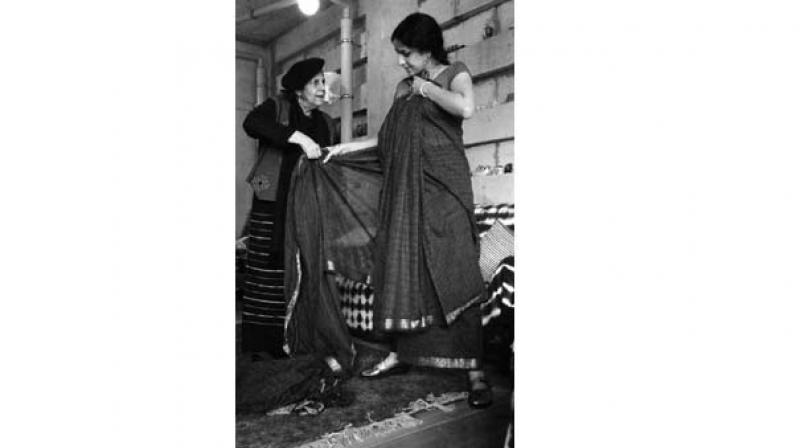The whole six yards
A Sari Draping workshop at Jaypore, Indiranagar with Rta Kapur Chisti will change how you view India's quintessential favourite garment.

Did you know that Rta, can convert a six-yard into palazzo pants or a skirt? Well the renowned textile scholar and editor of book series - ‘Saris of India’ has many more sari secrets up her sleeve and will be showcasing how a sari can offer limitless possibilities. Incidentally, she can drape a sari in over 108 ways!
“The Saris of India project was initiated in 1984 at the instance of Sri Martand Singh while the first Vishwakarma Exhibition was being exhibited in India after having been shown at the festival of India in the UK. He thought that we should dig deeper into the sari as it could be developed for a contemporary market at least for the next fifty to hundred years. What started as a one year project, took many more, as there were many more sari varieties that could still be commissioned and were woven even after thirty or forty years,” says Rta. Basically research was the basis of the books that emerged and she also got involved with production. Most weavers were eager to replicate their traditional textile range which had virtually died out.
The sari allows us to go back at least a thousand years in design terms. It is conceived on the loom as a three-dimensional garment with variables in pattern, weave and structure between its inner and outer end-pieces and its two borders, which provide drape, strength and weight while the body enhances its drape. All these elements help maintain the form of the sari when it is worn. “A process of awareness began with the Master Weavers exhibition in 1982 and continued through a series of six subsequent exhibitions initiated by Martand Singh sponsored by the Development Commissioner (Handlooms) Government of India which attempted, to discover whether a level of excellence was still possible in the tradition of hand-crafted textiles. It led to the recognition of a handful of craftsman in different parts of the country, who were still capable of giving us a glimpse of the best of their inherited skills. They gave us the confidence to move beyond the museum masterpieces, to look for what “could be” achieved today
. Though the experience of searching, finding and attempting to revitalize within a contemporary context was exhilarating in itself, it left one with a feeling of standing on thin ice.
How little we know about the craftsman, his capabilities and the dire circumstances out of which design emerges. What exactly is possible within a specific area of skill? How can the range of handloom weaving, printing and dyeing be developed further without adequate knowledge of its specific capabilities, capacities, potential strength and limitations? This growing awarene- ss and the realization that too much had already been allowed to die, out of sheer neglect, combined with a final assault of power looms and mills during the second half of the 20th century, brought a sense of urgency to this documentation project.”
Although it is a fast disappearing garment for everyday wear, the sari will survive as special occasion wear Indian women today prefer stitched garments and western wear of easy-to- maintain wash-and-wear fabrics. “We are working on hand spun, hand woven desi cotton varieties and silks for saris, stoles, fabrics, and home furnishing,” says Rta. The workshop will see her show an audio-visual that takes you on a tour through the 15 sari producing states of India and she will stop at four or five points to try out styles.
Where: Jaypore Store, Indiranagar
Workshop 1
Date: Friday Jan 18, 2019
Time: 5 pm - 8 pm
Register Here: https://www.jaypore.com/sd1
Workshop 2
Date: Friday Jan 19, 2019
Time: 11:30 am - 2:30 pm
Register Here: https://www.jaypore.com/sd2

